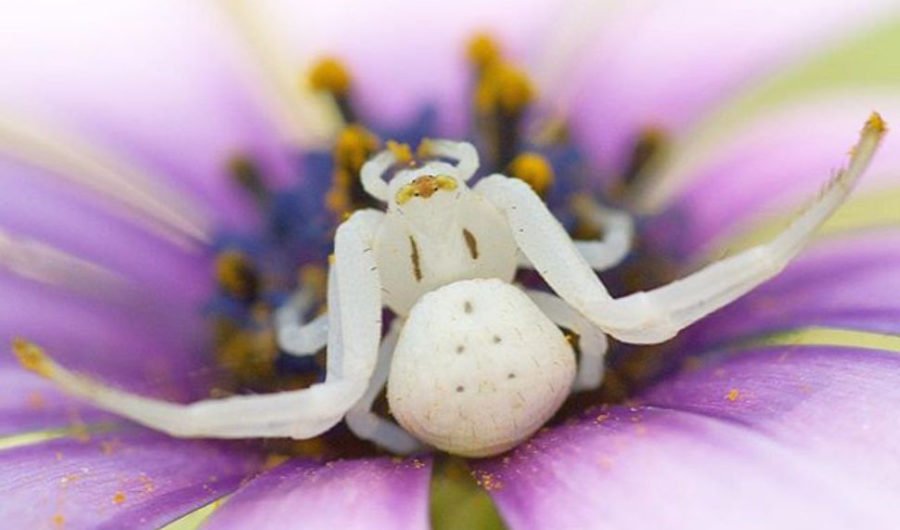The spectacular crab spider eats prey three times her size

THE FEMALE spectacular crab spider (Thomisus spectabilis) loves florals, preferring the white petals of Australia’s native hibiscus (Hibiscus heterophyllus). And she isn’t easy to spot, in fact, for her prospective prey, it’s nearly impossible.
“Normally they are perfectly camouflaged against the white-coloured background. They often wait with their arms outstretched, ready to seize prey,” Robert Whyte, the lead author of Australia’s most comprehensive field guide to Australian Spiders, tells Australian Geographic.
“Females of this species can capture very large prey, sometimes insects many times their own body length. They are often observed after you notice an oddly immobilised insect. Then you notice the insect is being eaten by a crab spider,” he adds.
One image featured in Robert’s field guide shows a female spectacular crab spider latched onto a beautiful Ulysses butterfly (Papilio Ulysses), who’s big blue wings can span up to 105 mm. She’s also known to take on moths and bees.
According to Robert, such a high risk strategy has allowed the female spectacular crab to evolve fast acting and potent venom that stops her prey from struggling or flying away. This, coupled with her ability to match her colour to her chosen flower, makes the female spectacular crab spider a formidable predator.
Colour change
The female spectacular crab spider gets her colour from white guanine deposits excreted by the gut, and, due to the clear layer of skin, we’re able to see the white surface of the guts exterior lining, Robert explains.
He says that previous research on how yellow crab spiders camouflaged with yellow flowers has helped us to better understand the colour changes we see in female spectacular crab spiders.
“First they become fluorescent, but still white… Then they are tinted yellow in the second stage, on their way to the third stage, which is bright yellow… Even red bands can be created in this way in close relatives of the spectacular crab spider.”
Their camouflage and stillness make them ideal photographic subjects.
“Crab spiders are perhaps the easiest daytime spiders to photograph. They rely on camouflage to avoid detection and so their main defence strategy is staying still.
“Other groups like jumping spiders and lynx spiders leap about and run away.”

A spectacular crab spider on a hibiscus. (Image Credit: Robert Whyte)
Robert Whyte is lead author of the comprehensive A Field Guide to Spiders of Australia, published by CSIRO Publishing in 2017.
READ MORE:
- The truth about white-tail spiders
- Australian spiders: 10 most dangerous
- Hidden housemates: Australia’s huge and hairy huntsman spiders

